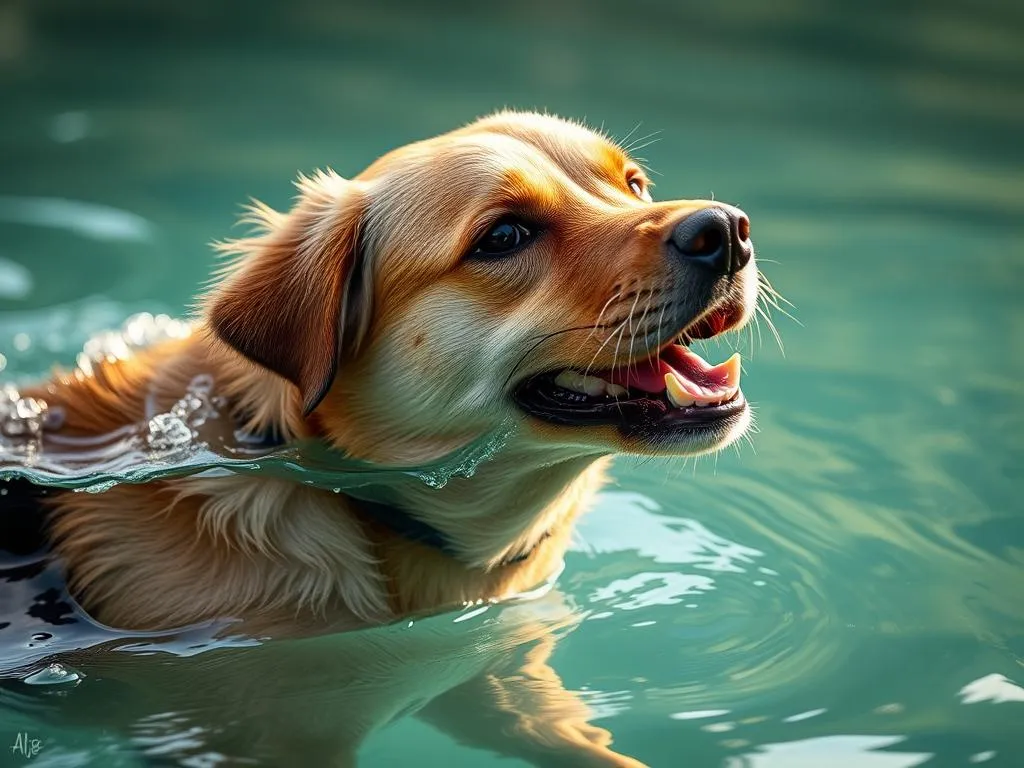
Introduction
Teaching your dog to swim is not just a fun summer activity; it’s an essential skill that can enhance your dog’s safety and well-being. Swimming provides excellent exercise, helps your dog cool off on hot days, and can even serve as a form of mental stimulation. However, many dog owners have concerns about their pets and water, often fearing they won’t take to it naturally or may struggle in the water.
In this comprehensive guide, we will explore how to teach a dog to swim effectively. We will cover essential insights about understanding your dog’s comfort level with water, preparing for swimming lessons, step-by-step training, addressing common challenges, and making swimming a fun activity for your furry friend.
Understanding Your Dog’s Comfort with Water
Assessing Your Dog’s Breed and Swimming Ability
Not all dogs are created equal when it comes to swimming. Certain breeds, such as Retrievers, Labrador Retrievers, and Newfoundlands, are natural swimmers thanks to their body structure and buoyant coats. On the other hand, breeds like Bulldogs and Dachshunds may struggle due to their physical characteristics.
Factors that affect swimming ability include:
- Size: Larger dogs may find it easier to stay afloat.
- Body Structure: Breeds with long legs and streamlined bodies typically swim better.
- Coat Type: Dogs with waterproof coats are more suited for swimming.
Understanding your dog’s breed can help set realistic expectations for their swimming proficiency.
Recognizing Signs of Fear or Anxiety
Before you introduce your dog to water, it’s vital to gauge their comfort level. Watch for body language indicators that may suggest discomfort, such as:
- Cowering or Hiding: If your dog is trying to avoid the water, they may be fearful.
- Excessive Barking or Whining: Vocalizations can indicate anxiety.
- Pacing or Restlessness: Signs of stress that can affect their willingness to enter the water.
Respecting your dog’s feelings is crucial. If they seem anxious, take your time and gradually acclimate them to the idea of water.
Preparing for Swimming Lessons
Choosing the Right Location
The environment plays a significant role in how successfully you can teach your dog to swim. Here are some ideal settings:
- Calm Lakes: These usually have shallow areas that are perfect for beginners.
- Pools: A controlled environment where you can monitor conditions easily.
- Shallow Beaches: Ensure the area is not crowded and free from strong currents.
Avoid locations with strong currents or deep waters until your dog is a confident swimmer.
Essential Gear and Safety Equipment
Safety should be your priority when teaching your dog to swim. Here’s a list of recommended gear:
- Life Vests: A doggy life vest can provide additional buoyancy and safety.
- Leashes: A sturdy leash helps you maintain control during lessons.
- Floating Toys: These can entice your dog to enter the water and swim.
It’s also important to have safety measures in place, such as keeping a first aid kit nearby and supervising your dog at all times.
Step-by-Step Guide on How to Teach a Dog to Swim
Introducing Your Dog to Water
The first step in how to teach a dog to swim is to create a positive experience. Start with gradual introduction techniques:
- Use Shallow Water: Let your dog walk into the water slowly.
- Positive Reinforcement: Offer treats and praise as they venture closer to the water.
- Encouraging Curiosity: Toss their favorite toy into the shallow water to spark interest.
Teaching Basic Swimming Techniques
Once your dog is comfortable with shallow water, it’s time to teach them the basics:
- Getting Comfortable in Water: Allow your dog to walk and splash around in shallow areas.
- Supporting Your Dog in Deeper Water: Gradually guide them into deeper sections, staying close to provide support.
- Encouraging Paddling: Use gentle nudges to encourage your dog to paddle, making sure they feel secure.
Practicing Swimming Skills
Repetition is key to building confidence. Keep these tips in mind:
- Short Sessions: Limit training to 10-15 minutes to prevent fatigue.
- Positive Reinforcement: Continue using treats and praise to motivate your dog.
Addressing Common Challenges
Overcoming Fear of Water
If your dog displays fear, it’s crucial to handle it with care. Here are some techniques:
- Calm Voice: Use a soothing tone to reassure your dog.
- Gradual Exposure: Slowly introduce them to water, allowing them to set the pace.
- Games and Rewards: Use playtime to create positive associations with water.
Dealing with Safety Concerns
Recognizing when your dog is struggling in water is essential. Signs of distress include:
- Panic: Flailing or trying to climb onto you.
- Exhaustion: Lack of energy or reluctance to continue swimming.
If your dog starts to panic, calmly guide them back to the shore or a safe area. Avoid pulling them forcefully, as this can increase anxiety.
Making Swimming a Fun Activity
Incorporating Games and Toys
Swimming should be enjoyable for your dog. Consider these ideas:
- Fetch: Toss a floating toy into the water for them to retrieve.
- Water Tag: Play a gentle game of tag in shallow water to keep them engaged.
Socializing with Other Dogs
Swimming with other dogs can enhance the experience. Benefits include:
- Social Interaction: Your dog can learn from others and build confidence.
- Safety in Numbers: Having other dogs in the water may make your dog feel more at ease.
Always supervise group swimming sessions to ensure safety.
Conclusion
Teaching your dog to swim is a rewarding experience that promotes their safety and well-being. Remember to be patient and consistent throughout the training process. Each dog learns at their own pace, and it’s essential to respect their feelings about water.
Encourage your dog to enjoy the experience, and share your experiences or tips for teaching dogs to swim in the comments section below!
FAQs
At What Age Can I Teach My Dog to Swim?
You can start teaching your dog to swim as early as six months, but ensure they are physically mature enough for swimming activities.
What If My Dog Doesn’t Like Water?
Some dogs may have a natural aversion to water. Gradually introduce them to it and use positive reinforcement to create a positive association.
Can All Dogs Learn to Swim?
Most dogs can learn to swim, but some breeds may struggle due to physical characteristics. Always respect their limitations.
How Often Should I Practice Swimming with My Dog?
Aim for 1-2 swimming sessions per week, depending on your dog’s comfort level and stamina.
What Should I Do If My Dog Swallows Water?
If your dog swallows too much water, monitor them for signs of distress. If they show symptoms like coughing or lethargy, consult your veterinarian.









